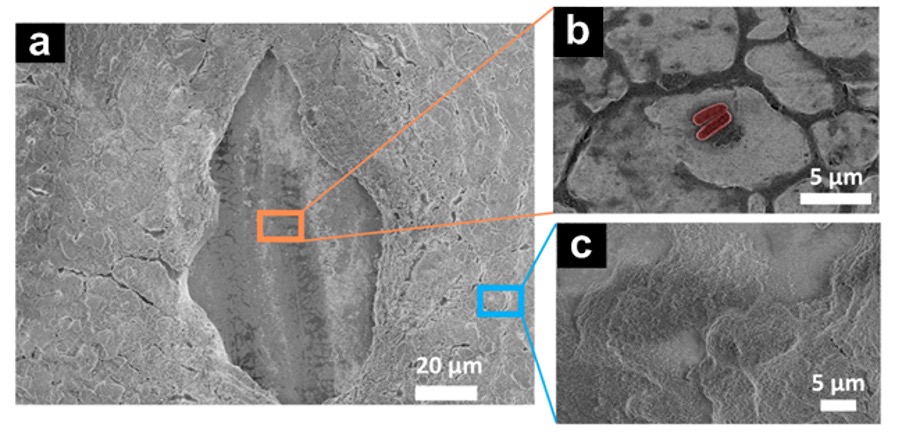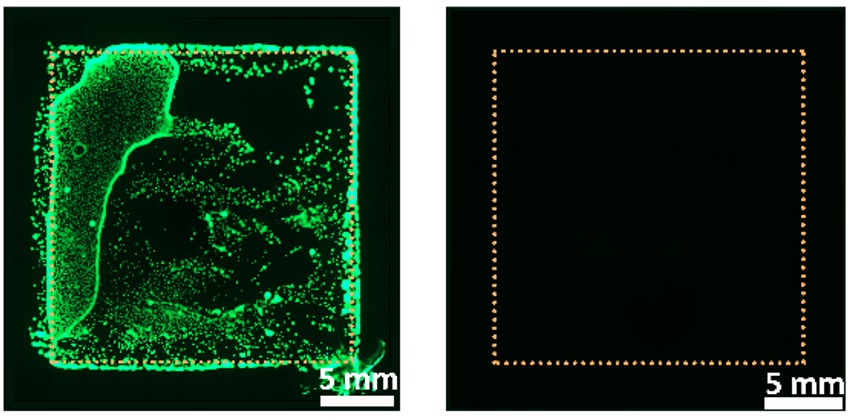Disinfection of all surfaces acting as potential points of pathogen transmission is challenging, laborious and often ineffective as recontamination is sporadic and incidental. Engineering surfaces that are intrinsically uninhabitable by pathogens may help prevent future pandemic outbreaks and contribute to decreased transmission rates of bacteria and viruses.
Profs. A. Tricoli and D. Nisbet’s research groups at the Australian National University (ANU) have developed a surface coating that is able to both repel bacteria and provide a strong antimicrobial action in case of bacterial adhesion. As a result, these coatings can reduce adhesion and proliferation of gram positive and negative bacteria by more than 99.85%, even when immersed in concentrated bacterial cultures for several hours. The coating architecture consists of two hierarchically structured nanomaterials anchored on a robust interpenetrated polymer network layer. This coating structure is highly water repellent, and thus capable of resisting the adhesion of pathogens present in droplets expelled by sneezing, coughing or hosted on human skin. When in contact with bacteria, the second nanocomponent of the coating responds by releasing antimicrobial agents that can destroy the bacterial cytoplasmic membrane in a short time.

Potential mechanism of bacterial adhesion by contact with a damaged area of the coating. SEM images of a deliberately applied scratch in the coating (a) revealing adhesion of bacteria on the scratched area (b) while unscratched surfaces areas stay bacteria-free (c).
In-situ confocal microscopy and subsequent scanning electron microscopy, performed at the Microscopy Australia facility at ANU revealed the pathogen repulsion mechanism of this coating structure. The formation of a trapped air layer prevents bacteria contained in liquids or on humid surfaces reaching the coating. However, if there is any damage to the water-repellent layer or release of the trapped air, pathogens could then attach to the surface. The incorporation of a second antimicrobial defense mechanism would then come into play to effectively counter bacterial transmission. Further studies are ongoing to also prevent transmission of viral pathogens.

Bacterial adhesion on a steel surface without (left) and with the coating (right) with bacteria fluorescing in green. Bacterial adhesion was induced by imprinting of bacteria cultures on the substrate surfaces.
Notably, previously proposed water-repellent coatings to prevent transmission of pathogens, have found limited use, due to their poor mechanical stability and inability to prevent proliferation in case of successful bacterial adhesion. This dual pathogen-repellent and antimicrobial properties of the ANU spray-on coating has significant potential to provide a practical solution to fight infection via surface contact.
To commercialise this invention, a patent application has been submitted and a start-up company, NanoStratus, initiated. There are also various industrial projects underway including an ARC Linkage project and a contribution to an ARC Training Centre.
Paper: S. Wong, Z. H. Stachurski, D. R. Nisbet and A. Tricoli, Ultra-durable and transparent self-cleaning surfaces by large-scale self-assembly of hierarchical interpenetrated polymer networks. ACS Applied Materials & Interfaces 2016, 8 (21), 13615-13623
Patent: W.S.Y. Wong, A. Tricoli, D. Nisbet, Z. Starchurski, Interpenetrating polymer networks, P151609, Australian Provisional Patent Application, 10 May 2016
3D confocal microscope image of bacteria floating over the coating developed at ANU with bacteria fluorescing in green.
December 9, 2020